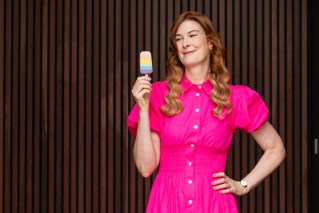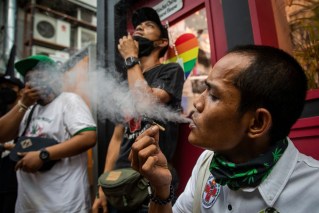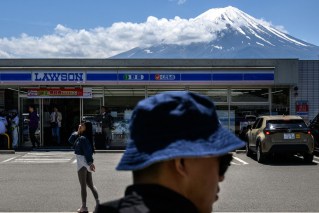Bhutan deserves its reputation as ‘the happy kingdom’
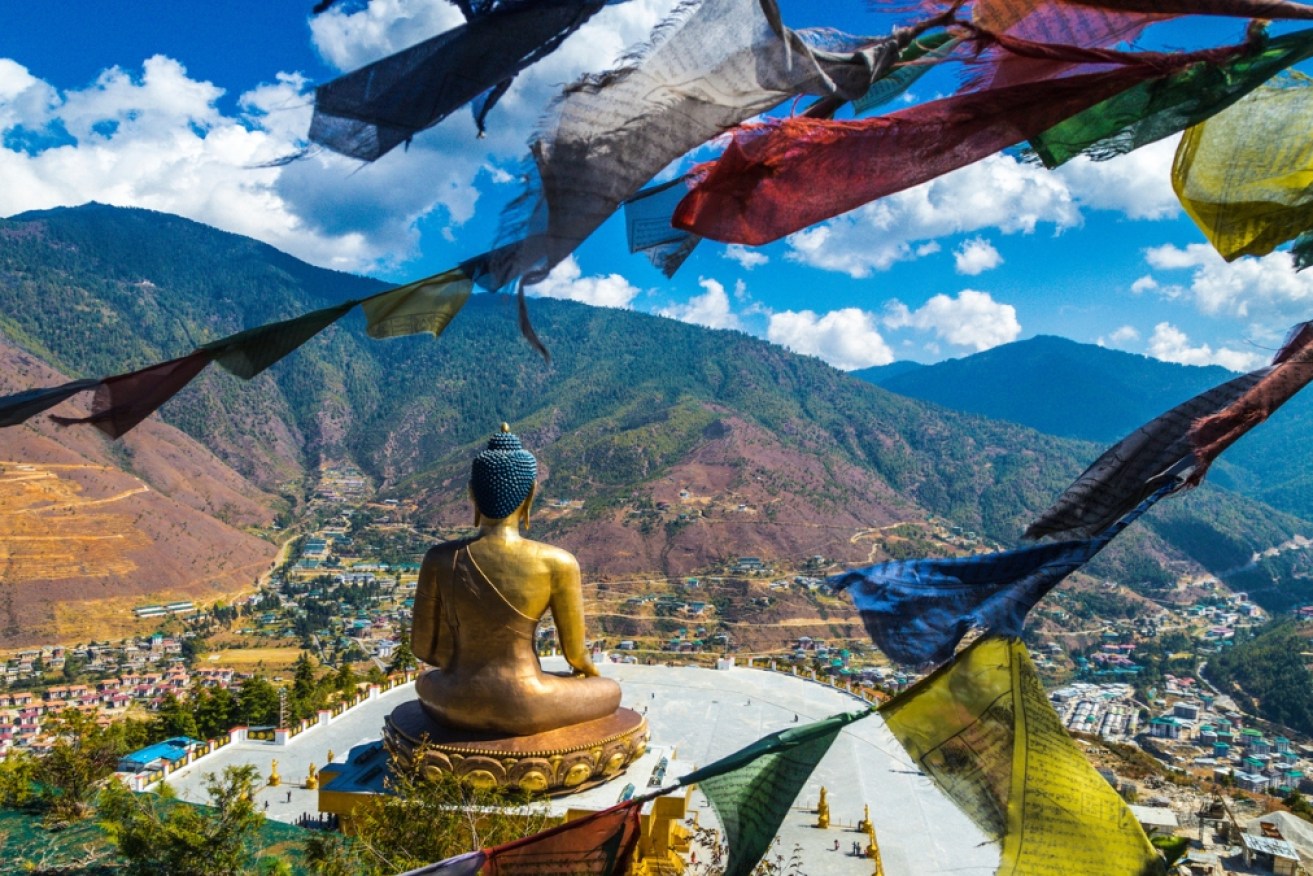
I’m struggling to get my foot into the crook of my hip, to sit properly cross-legged in lotus position.
Unlike the other composed yogis in the hall, I’m a twitching mess, lacking any of the serenity associated with meditation. And, when all is pin-drop quiet, I fail to count the three required oms, awkwardly adding an extra.
The yoga studio at the Six Senses Lodge in Thimphu sits at an elevation of 2350 metres, so I blame the altitude. But this is Bhutan, known as the ‘happy kingdom’, where smiling at yourself and your mistakes is encouraged. So that’s what I do.
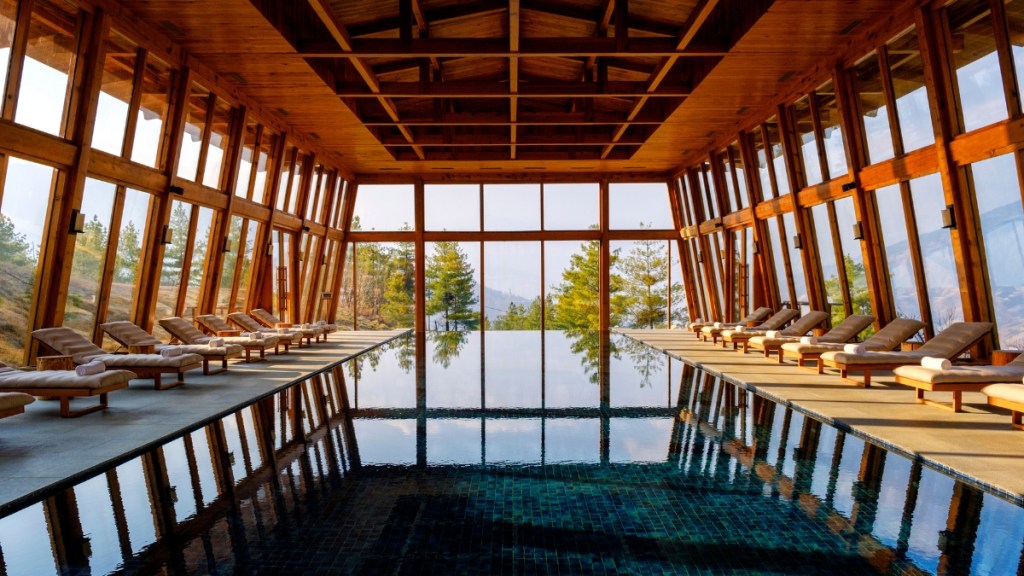
A pool with a view, at Six Senses Thimphu. Photo: Lynn Gail
Before the trip, I’d been met with blank looks. “So, where exactly is Bhutan?” friends said.
“It’s a tiny landlocked country in the Himalayas, about half the size of Tasmania, bordering China and India. There’s one traffic light that doesn’t work, and a population of around 770,000,” I’d reply.
I’d heard that landing at the country’s airport – Paro International – is something few pilots are expert enough to do, but it had slipped my mind as I soaked up the sight of the Himalayas on the 6am flight from Bangkok. Then, suddenly, our plane dropped into the narrow valley, descending at speed, until we safely bounced along the runway to the sound of passengers clapping.
Outside the airport, my guide, Chencho Lham, greets me like a friend, wrapping me in hugs and a white khata (scarf) in a traditional Bhutanese welcome.
Tourism opened Bhutan to the outside world only in 1974, when just 287 travellers visited. In 2023 that had risen to 100,000 – still comparatively low.
With more than 70 per cent of its land draped in forest cover, Bhutan is the only carbon-negative country on the planet. The government carefully manages visitor numbers to help protect the isolated kingdom’s pristine environment.
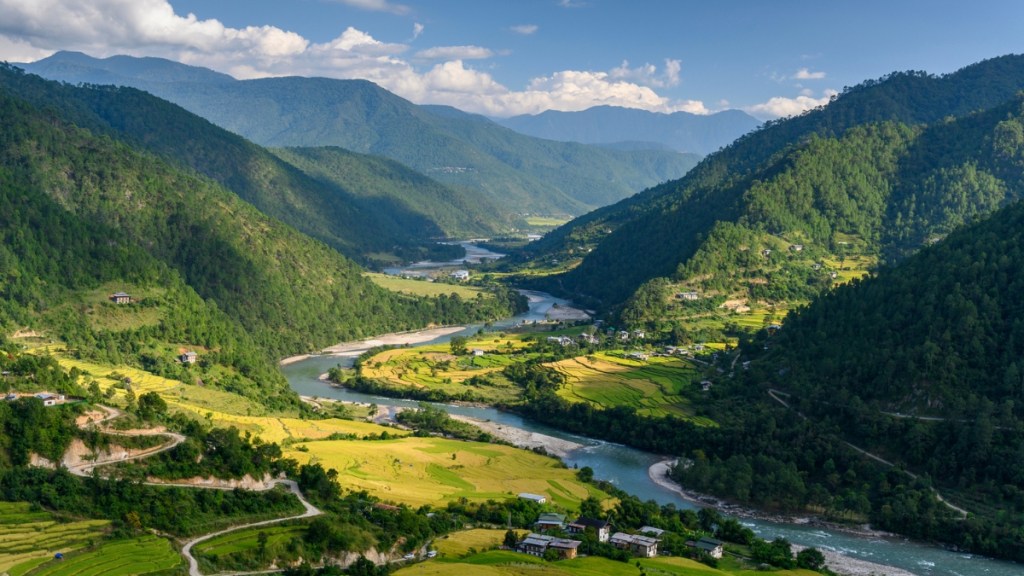
The vast majority of Bhutan is lush with greenery. Photo: Getty
Having untangled myself from the yoga, the day unfolds in Bhutan-style, unhurried and stress-free, as we head to the Buddha Dordenma statue in Thimphu, the capital city.
Built from bronze and gilded in gold, the soaring 51.5-metre-tall statue honours Bhutan’s beloved fourth king, Jigme Singye Wangchuck. He was the man who, in 1972, introduced the Gross National Happiness Index by developing a survey that measured his people’s contentment.
The survey is now completed every five years by a random 10 per cent of the population and it appears to have had some success. People seem genuinely happy. Crime rates are low, with most wrongdoings related to dealing or smoking the marijuana that grows naturally throughout the countryside. Sellers and smokers who are caught must enter rehabilitation and have counselling.
All roads lead to Buddhism in Bhutan. After accepting an invite to join nuns in afternoon prayer, we head to Shechen Orgyen Chodzong Nunnery. Thankfully, Kumar, my driver, has 20 years under his seatbelt, and he navigates the sharp mountain bends with ease.
Nestled in forested mountains and founded in 2001, the nunnery is one of the few monasteries where women can study to become teachers. We enter to rousing chants, deep drum thuds and didgeridoo-like tones rumbling from long horns. Suddenly, a nun playing cymbals begins laughing. Infectious, roll-down-face tears of laughter, at what, I have no idea, but it’s pure unencumbered joy.
After composure is restored and prayer time ends, we share suja – a traditional butter tea – and the nuns tell me that once they graduate, they’ll teach extensive meditation courses.
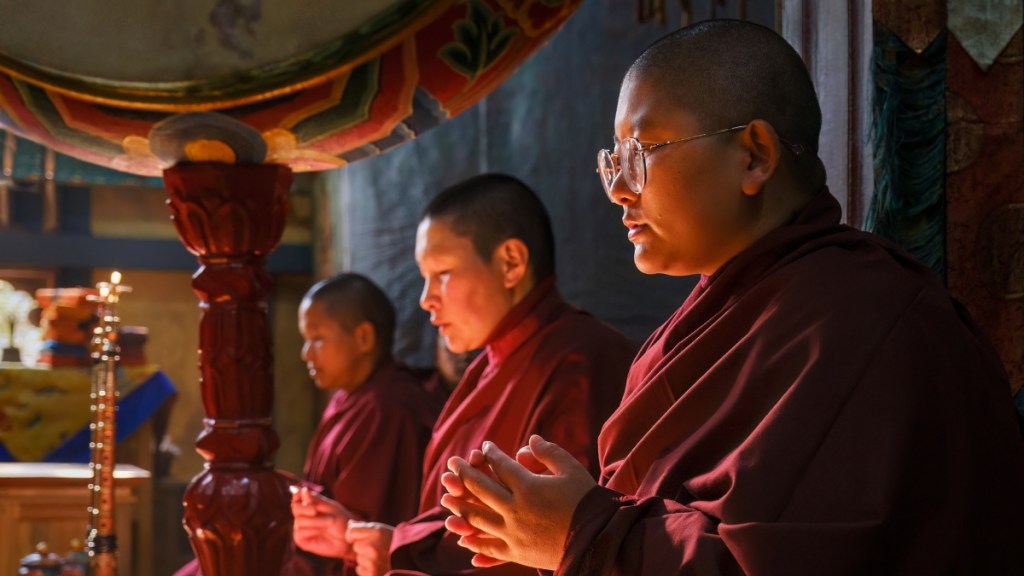
A calm moment before giggles disrupt the nunnery. Photo: Lynn Gail
With a spring in my step, I return to my suite at the Six Senses Lodge. A golden light tinges the mountain range just before the sun slips to another time zone, and I can see how it earned its nickname the “Palace in the Sky”.
The following morning I’m up with the frost, soft sunlight filtering through the misty dawn, revealing layers of magnificent snow-dusted peaks. A waiter greets me at breakfast with two shots: One a detox with pumpkin, lime, carrot and honey, the other, anti-ageing, with sunflower seeds and a touch of jaggery (unrefined sugar). The menu tempts me to try gondo datshi – Bhutanese scrambled eggs cooked with cheese, chilis and a dollop of butter, and traditional buckwheat pancakes drizzled with local honey.
I’m here in March, one of the best times to visit. It’s clear blue skies all the way to the mountainous ridges when we leave Thimphu for Punakha Dzong – the Palace of Great Happiness.
We pop into Gagyel Lhundrup Weaving Centre on the way to meet women who make traditional textiles by hand. Some of their intricate designs, which can take up to eight months, are made exclusively for Bhutan’s royal family. I give it a try, interlacing fine silk threads, but it’s mission impossible.
We continue on, rounding rising mountains until three hours later we reach Punakha Dzong. Located at the confluence of two rivers named Phu Chhu (father) and Mo Chhu (mother), the spectacular 17th century monastery stretches along the water’s edge.
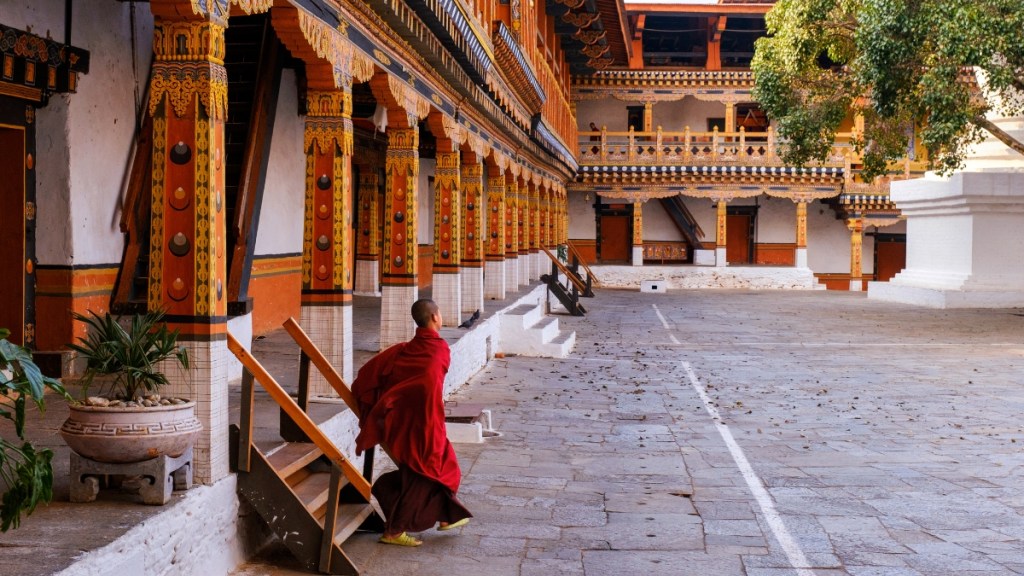
The courtyard inside Punakha Dzong Monastery. Photo: Lynn Gail
Inside the fortress, decorative four-storey walls showcase elaborate window frames edged in traditional artwork. Monks with their robes flapping in the breeze seem to fly across the courtyard to prayer halls prohibited to outsiders.
Close-by, the Punakha Suspension Bridge brings new focus as it swings like a hammock in a hurricane. Exhilarated, unnerved, I half-stumble across its 180 metres, clasping cables edged by thousands of fluttering prayer flags. The view is worth every wobble. Below me, the ice-blue Po Chhu River is in full flow, above, alpine mountains stretch in the distance like Swiss postcards.
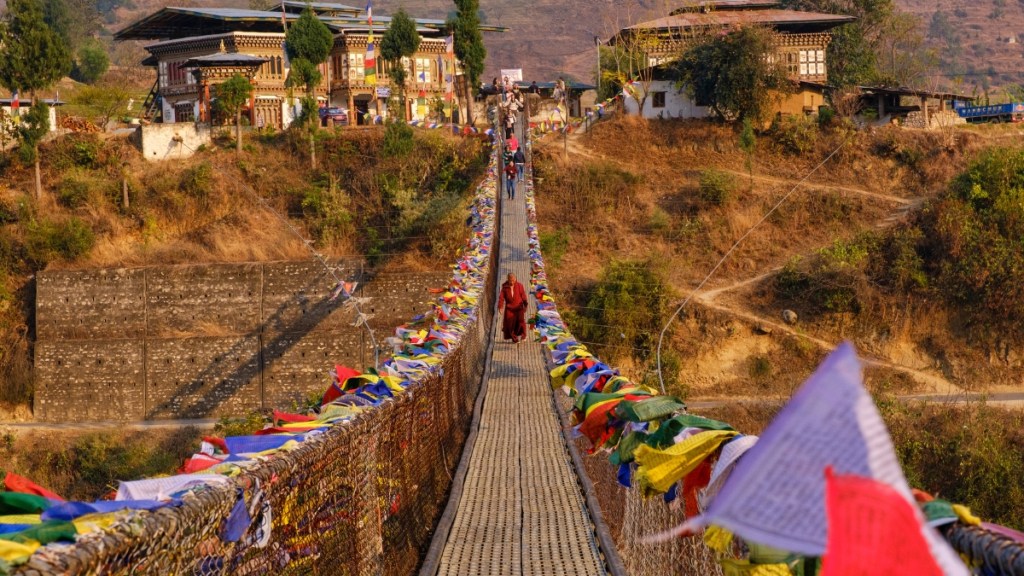
The precarious Punakha Suspension Bridge. Photo: Lynn Gail
At a local restaurant I try Bhutanese dishes called lom fry – deep-fried dried turnip leaves – and goen hogay, a traditional cucumber salad with chillies and cheese. Ema datshi – Bhutan’s national dish – comes loaded with cheese and peppers that dance over my tongue in a hot frenzy.
The next day we visit Chimi Lhakhang, a fertility temple where would-be parents go to seek blessings from the monks. Dedicated to Lama Drukpa Kunley – known as the Divine Madman for his unorthodox teachings and busy sex life – the temple’s walls are lined with wooden phalluses, which are Bhutan’s lucky charm. A photo album showcases success stories, pictures of beaming couples holding bundles of joy.
Outside, a woman clutches a huge wooden penis like a newborn. Barefoot, she circumnavigates the temple’s perimeter three times, meditating, turning rows of prayer wheels to accumulate merit with the gods, before receiving the all-important birth blessing. In a country that believes in rebirth, rituals and the power of prayer, who knows what’s possible.
As the days click over, Bhutan gently alters my world, challenging me to look at life anew. With its undeniable pull, Buddhism reveals how compassion and calmness go hand in hand. People here really do seem content, often caring for others before themselves. I find myself more and more open to the possibility that having less is more, to be able to fully engage with nature’s great gifts. Could it do the same for you?
Useful information
Several international airlines fly from Australia to Bangkok and Singapore. Drukair – Royal Bhutan Airlines has scheduled weekly flights to Paro, Bhutan, from both. Australians require a visa to enter. Visitors can travel independently in Thimphu and Paro; all other places require a guide. More information at bhutan.travel/about
The writer was supported by Bhutan Tourism













